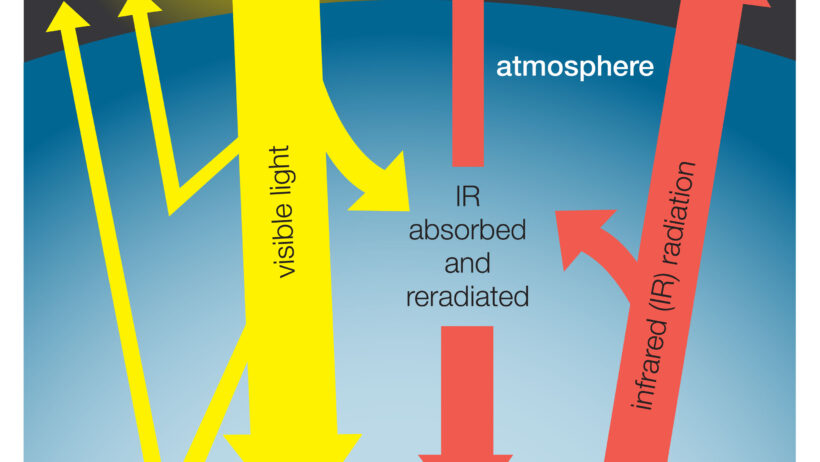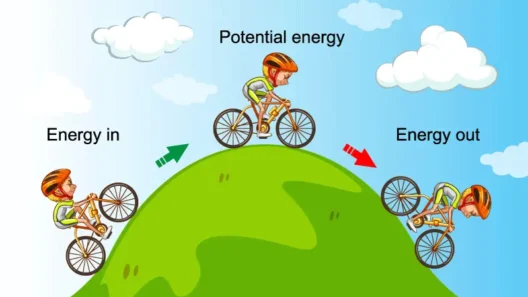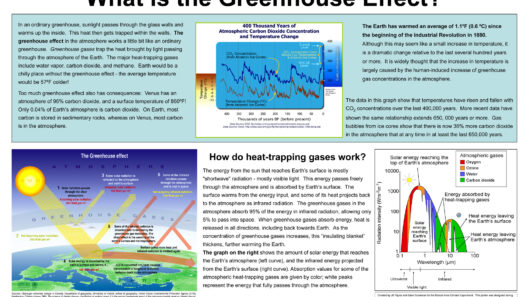Global warming and climate change represent some of the most critical challenges facing humanity today. A significant driver of these phenomena is the greenhouse effect, a natural process that warms the Earth’s surface. However, human activities have intensified this effect by increasing the concentration of certain gases in the atmosphere. Understanding the gases responsible for the greenhouse effect is essential for formulating effective climate policies and individual actions to mitigate their impact.
Central to this discussion are greenhouse gases, which trap heat in the atmosphere and contribute to the rise in global temperatures. Primarily, four key players dominate the greenhouse gas arena: carbon dioxide, methane, nitrous oxide, and fluorinated gases. Each of these gases has distinct sources, impacts, and lifetimes in the atmosphere.
Carbon Dioxide (CO2): The Ubiquitous Offender
Carbon dioxide is the most abundant greenhouse gas emitted by human activities. Its pivotal role in climate change cannot be overstated. When fossil fuels—such as coal, oil, and natural gas—are burnt for energy, CO2 is released as a byproduct. Deforestation also exacerbates the situation; as trees are cut down, not only is the CO2 they store released back into the atmosphere, but their capacity to absorb CO2 is also diminished.
The significance of CO2 goes beyond its volume. It has a long atmospheric lifespan, remaining in the atmosphere for centuries. As a result, even if emissions ceased today, the effects of existing CO2 levels would persist, highlighting the urgency of reducing emissions now to avert catastrophic consequences in the future.
Methane (CH4): The Potent Contender
Methane constitutes another formidable greenhouse gas, albeit less abundant than carbon dioxide. Its atmospheric impact is disproportionately large; methane is over 25 times more effective at trapping heat than CO2 over a 100-year period. Much of the methane emitted results from agricultural practices, particularly livestock digestion and manure management. Additionally, methane leaks occur during the extraction and transport of fossil fuels, especially natural gas.
The short atmospheric lifetime of methane, averaging 12 years, means that curbing methane emissions could yield more immediate benefits for climate stabilization. Farm management practices that enhance manure management, reduce enteric fermentation (a digestive process in ruminants), and minimize methane leakage from oil and gas infrastructure are crucial for addressing this greenhouse gas.
Nitrous Oxide (N2O): The Silent Contributor
Nitrous oxide is another potent greenhouse gas, with a heat-trapping effect approximately 300 times greater than that of carbon dioxide over a century. The principal source of nitrous oxide emissions is agriculture, primarily through the use of synthetic fertilizers. When fertilizers are applied to crops, a portion of the nitrogen is converted to nitrous oxide through microbial processes in the soil.
This gas also stems from industrial processes and the combustion of fossil fuels. Given its potent effect and the widespread use of fertilizers, addressing nitrous oxide emissions is crucial for mitigating climate change. Precision farming techniques that optimize fertilizer use can help reduce emissions while maintaining agricultural productivity.
Fluorinated Gases: The Neglected Players
Fluorinated gases, encompassing a group of synthetic gases such as hydrofluorocarbons (HFCs), perfluorocarbons (PFCs), and sulfur hexafluoride (SF6), are less commonly discussed but are nonetheless significant players in the greenhouse gas landscape. These gases are primarily used in industrial applications, refrigeration, and air conditioning. Although they exist in much smaller quantities than the aforementioned gases, their global warming potential is alarmingly high. For instance, HFCs can be thousands of times more potent than CO2 over a specific timeframe.
International agreements have sought to phase out some of these fluorinated gases due to their long atmospheric lifetimes and potent heat-trapping capabilities. The transition to alternative substances that do not have the same environmental impacts is crucial for a comprehensive approach to climate change.
Addressing Greenhouse Gas Emissions: A Collective Endeavor
Mitigating the greenhouse effect necessitates a multi-faceted approach involving policies, technological advancements, and behavioral changes. Transitioning to renewable energy sources, such as solar and wind power, can drastically reduce carbon dioxide emissions from fossil fuels. Likewise, innovations in agriculture that focus on sustainable practices can lessen methane and nitrous oxide emissions.
In addition to reducing emissions, enhancing carbon sequestration—through reforestation and sustainable land management—can play an essential role in achieving net-zero emissions. Carbon capture and storage technology also holds promise for limiting CO2 emissions from power plants and industrial operations.
Individual actions also contribute to a larger movement against climate change. Efforts to reduce personal carbon footprints—such as using public transportation, minimizing meat consumption, and conserving energy—can foster significant societal change. Collective action can lead to substantial shifts in both public policies and corporate practices aimed at addressing the environmental crisis.
Conclusion: The Urgency of Understanding Greenhouse Gases
In conclusion, the gases responsible for the greenhouse effect encompass a complex interplay of carbon dioxide, methane, nitrous oxide, and fluorinated gases. Each of these gases plays a unique role in the acceleration of global warming. Understanding their sources, impacts, and potential for mitigation is critical for developing effective strategies to combat climate change. A united effort—incorporating individual commitments, technological innovation, and robust policy frameworks—stands as our best hope for addressing the pressing issue of climate change and safeguarding the planet for future generations.








